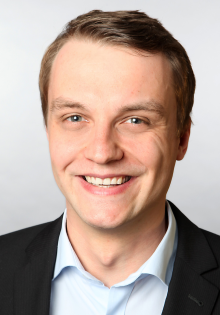Ulaanbaatar, the capital of Mongolia, is the coldest capital city in the world. During the long winter season, lasting about seven months, temperatures of minus 30 °C are considered normal – which means constant heating is required for homes. Old coal-fired power plants from the 1960s without exhaust gas filters, along with traditional heating systems that use coal, wood and waste of all kinds, create extreme air pollution. As part of the program “100,000 Heating Systems in Ulaanbaatar,” the Centre for Sustainable Energy Technology (Kompetenzzentrum für Nachhaltige Energietechnik, KET) at Paderborn University is now working with an international consortium on a research project known as “PV-2-Heat to Mongolia”, which will develop clean, safe and cost-effective heating solutions for households and districts in the Mongolian capital.
Funding from the Federal Ministry of Education and Research (BMBF)
The 1.3 million residents of Ulaanbaatar live in about 108,000 houses, 136,000 apartments and 90,000 yurts, which serve as mobile housing for Mongolian nomads. Traditionally, more than 60 percent of these residences are heated with coal and other fossil fuels. That means a huge blanket of smog is part of everyday life, and according to the World Health Organization it causes nearly 4,000 deaths a year. The Mongolian government has been trying to curb this problem for nearly 20 years, with moderate success. In order to get the enormous air and environmental pollution under control, various programs have already been created to introduce renewable energy sources. The research project “PV-2-Heat to Mongolia,” which the Paderborn-based KET is working on, aims to develop a suitable heating system that converts photovoltaic (PV) energy into heat. The project, with a total volume of about three million euros, is being funded by the “CLIENT II – International Partnerships for Sustainable Innovations” measure from the Federal Ministry of Education and Research (BMBF).
An international consortium
In addition to the KET, the German side includes the Paderborn company WestfalenWind GmbH, the latent heat accumulator developer Axiotherm GmbH, and Klaus Rauch consulting engineer. On the Mongolian side are several universities and research institutions as well as local providers of energy system solutions, which makes it logical for a business and sales model to be established directly in Mongolia.
Sven Jona from Axiotherm GmbH already has some experience working in Ulaanbaatar, and he is familiar with the challenges as well as the possibilities: “The climate conditions in Mongolia, with six to eight hours of sunshine a day even in the winter months, seem designed for using clean PV power for heating. In addition, the PV modules are extremely efficient because of the very low outdoor temperatures. However, all of the system components have to be adapted to the typically harsh conditions in Mongolia. It is a technical challenge, but what is even more important are the economic framework conditions. That is why one central aspect of the project is industrializing the “PV-2-Heat” system solution and involving local Mongolian producers, suppliers and assemblers wherever possible.”
Here it falls to WestfalenWind, as an experienced industry partner, to optimize the necessary PV systems for the special requirements and to put the Mongolian partners in a position to build, install and continue operating the systems themselves even after the end of the research project. “We want to give our partners strategic and technical support. Our shared goal is to promote the implementation of renewable energy and to help develop affordable systems while building acceptance among the population,” says project manager Bernd Tiemann from WestfalenWind.
Sustainable heat supply with solar power
The basis of the newly developed system will be a “Power-2-Heat” system developed jointly by the project partners Axiotherm and Klaus Rauch consulting engineer, known as the “kraftBoxx.” It was originally developed to store excess PV power from old PV systems, which no longer receive EEA funding in Germany after 20 years, in the form of heat. It uses latent heat accumulators, which offer much greater energy density than conventional hot water tanks.
Emre Acar, a research assistant at Paderborn University who is responsible for optimizing the heat accumulators on behalf of the KET, explains the individual project goals: “On the side of heat generation, a broad range of applications – old and new buildings, private households and administrative offices – needs to be considered. That means simulating various scenarios and ultimately designing, building and testing them on site as pilot systems. With regard to power generation, the PV systems as well as their control and regulation technology must be integrated into the existing power network in Ulaanbaatar and prepared for later upscaling. In addition, though, the project is primarily intended to guarantee international collaboration and know-how transfer through a research alliance with Mongolian universities and companies, and to develop partnerships at the academic and corporate level in order to train skilled personnel for a lasting impact in Mongolia.”
About the KET
The KET at Paderborn University was founded with the goal of helping to protect the climate and conserve resources from energy sources. Within the KET, researchers from the Faculty of Mechanical Engineering and the Faculty of Computer Science, Electrical Engineering and Mathematics collaborate at an interdisciplinary level. Their common goal is to advance research in the areas of innovative energy generation as well as efficient, environmentally friendly energy usage.



